My Sticks
I produce one piece handcrafted walking sticks and canes from a wide range of wood species. My stock normally includes Alder, Ash, Birch, Blackthorn, Elderberry, Hazel, Hawthorn, Holly, Privet and Rhododendron. I also produce sticks from Ivy and Gorse but, due to scarcity of suitable shanks, they are not always in stock. Handcrafted walking sticks are special. They are synonymous with the charm and tranquility of country life.
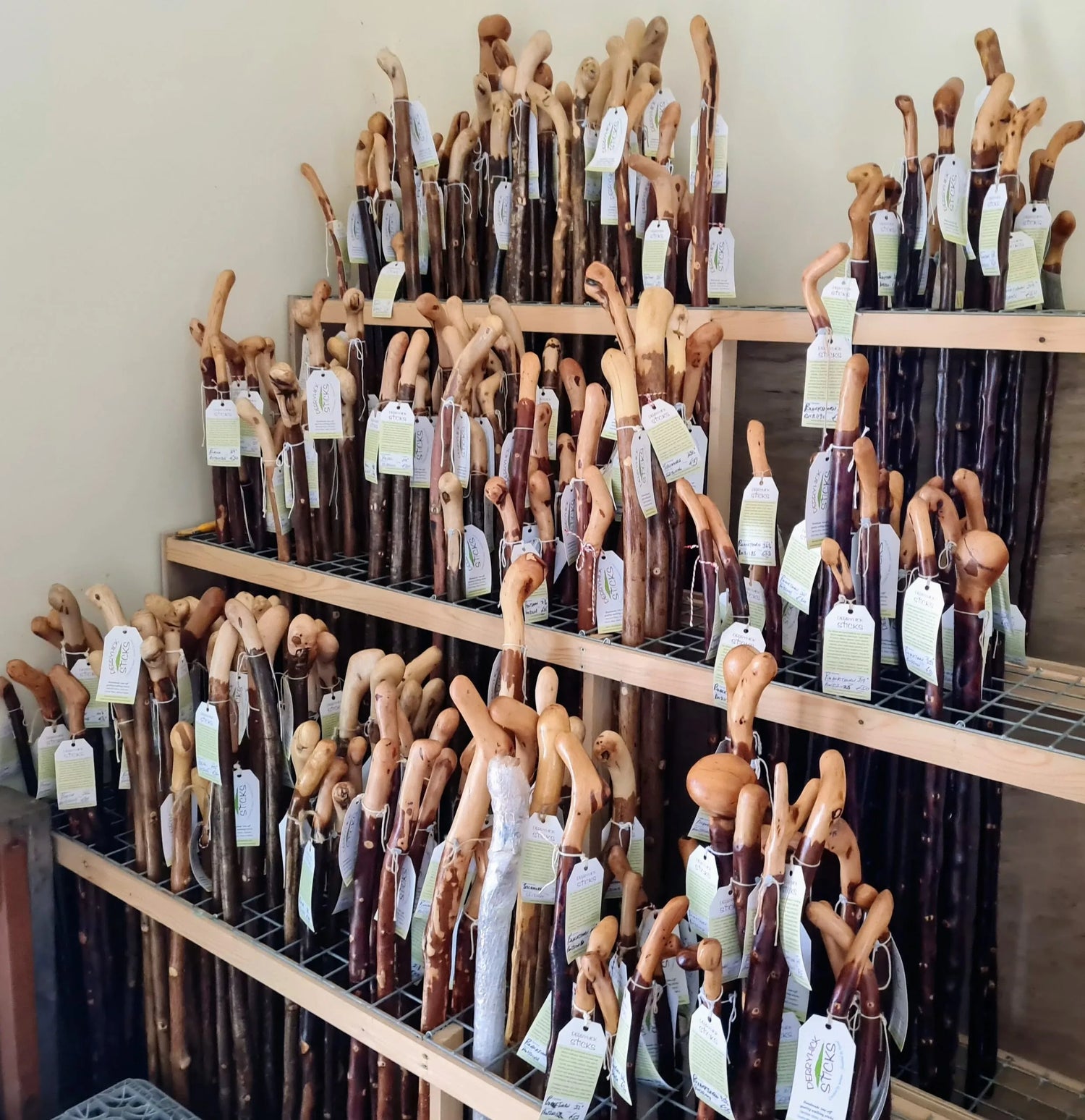
A Derryhick Stick
A handcrafted walking with its own unique characteristics, a stick not just for admiring but for taking with you on a walk – that is exactly what a Derryhick stick is.
My sticks are produced from naturally grown shanks. The size and quality can vary significantly. Each handle is individually shaped. The shank is heated for some straightening – just enough to ensure balance! (Walking sticks as straight as billiard cues can lack that 'natural' look). Then they are sanded… and sanded many times.
Finally, I apply several finishing coats of oil or varnish. Very few sticks turn out to be blemish free. This is to be expected and hairline cracks and colour variations are accepted as normal characteristics.
So, the slogan ‘Created by Nature – finished by hand’ accurately describes Derryhick sticks. I avoid the temptation to hide natural imperfections or other little idiosyncrasies. Every owner of a Derryhick Stick will quickly establish an affinity with his/her stick knowing that he/she will never see a copy with anyone else.
Each stick is separately photographed and numbered. Therefore, if you purchase a Derryhick Stick, you can be assured that the stick(s) selected will be the precise stick(s) which will be despatched on purchase.
However...
Just a few things you might like to know about my handcrafted walking sticks before you buy one or more: -
- If you are looking for a walking stick with a skillfully carved handle of traditional design or depicting a dog, bird or fish? Definitely, my sticks are not for you.
- Does a walking stick with rams horn, buffalo horn, cow horn or deer antler added as a handle appeal to you? Again, my sticks
are not for you. - If you like your walking sticks to be pristine and without flaw or to have shanks as straight as a snooker cue, then my sticks are not for you.
If, however, you would like a handcrafted walking stick for every day rustic country living, you will be interested in my sticks.
Perhaps you like a once-off stick with a handle designed only by nature and refined a little by hand, then browse Sticks for Sale – Derryhick Sticks
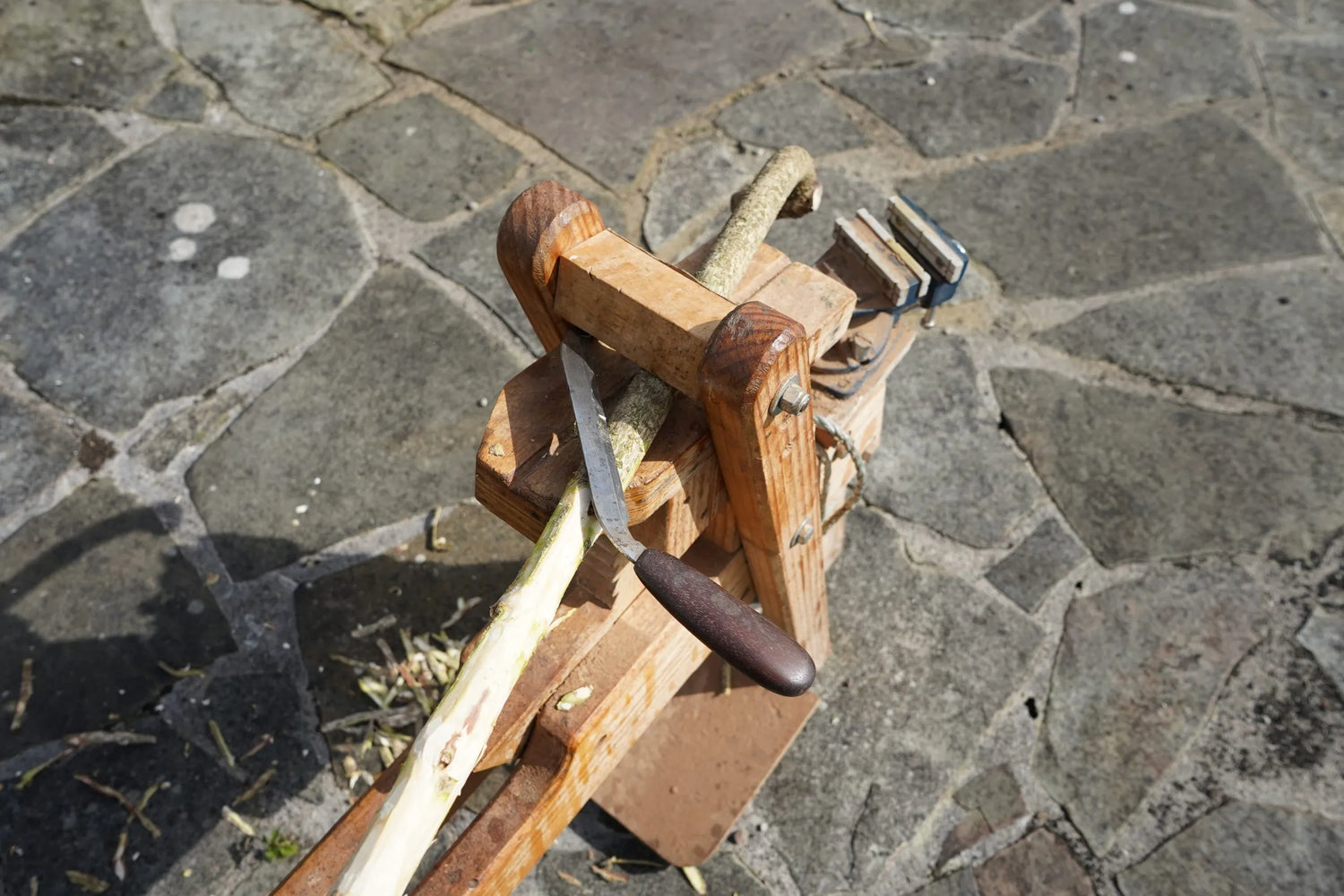
The Process
When I first started making walking sticks, I thought it would
be a quick and easy task… I soon discovered I was badly mistaken!
Stickmaking is a slow and tedious process requiring many steps before completion.
Firstly, I have to find suitable raw material. When sourced, the shanks have to be cut and hauled home…. often over difficult underfoot conditions as the cutting in normally done during the winter months. When I get them to my workshop, I treat the ends with a couple of coats of varnish or wax to reduce the risk of splitting while drying out.
I leave the sticks in a dry but well ventilated shed to season for a minimum of a year. However, for dense hardwoods (e.g. Blackthorn, Gorse, etc.,) I leave them for at least four years.
Then I do some minimal straightening – just enough to ensure a well balanced stick. I do not like walking sticks which have been straightened to resemble snooker cues… they look ‘factory’ made and lack individual
character.
Next, I shape the handle to a comfortable grip and, I remove the outer bark if it is unsuitable or uninteresting.
Then the tedious task of endless sanding is done and finally several coats of oil or top quality polyurethane are applied.
Not quite as simple as one might think!!
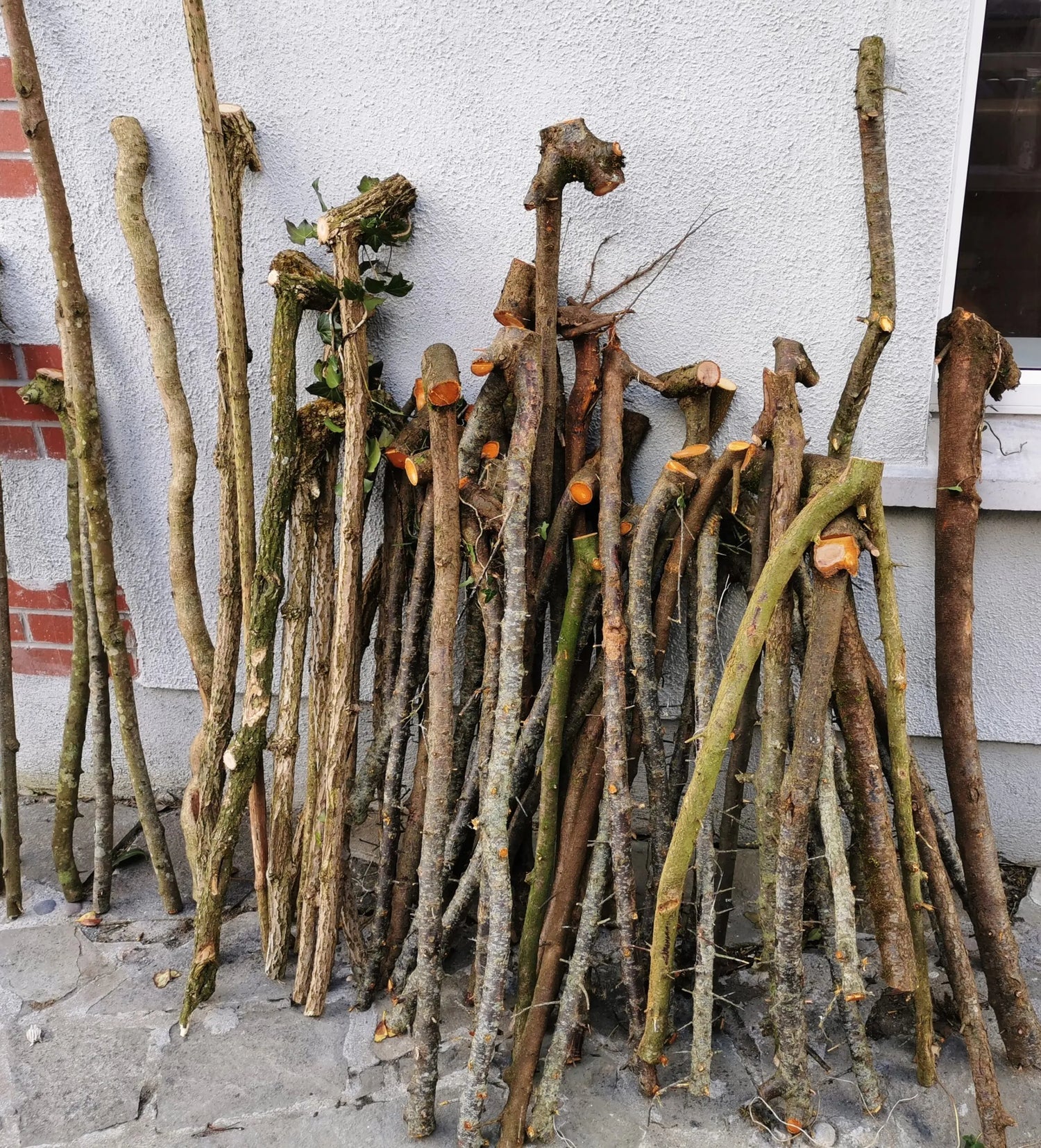
Sourcing the Shanks
Possibly the most enjoyable aspect of stickmaking is the task of sourcing the raw material. Shanks are best harvested from November to February. This is time that there is unlikely to be active growth and sticks cut during this time are less likely to split during the drying out process.
I am always on the look-out for likely spots that may be home to a few suitable sticks. Once I identify an area, I seek permission from the owner to enter the land and search for and cut some sticks. As soon as I get the go ahead, I’m off on a day’s hunting… for shanks! On such excursions I bring a sandwich and all of the gear necessary for the job, e.g. folding saw, small spade, gloves and some rope. Of course my trusted sprocker, Rocky, usually comes with me and usually he is my sole companion for the entire day!
After that it is a matter of chance and luck… some days will be fruitful with a dozen or more sticks being found while other days can be quite disappointing.
Next, I haul the day’s ‘catch’ home on back – sometimes a mile or more. This can be physically demanding as underfoot conditions can be difficult and hazardous during the stick harvesting season of the months of November, December, January and February. However, the exercise gained in getting out in the fresh air compensates for the less healthy task of sanding the sticks later in the process.
Once home, I treat the ends of the newly cut sticks with a couple of
coats of varnish or wax. This is done to reduce the risk of splitting
while drying out.
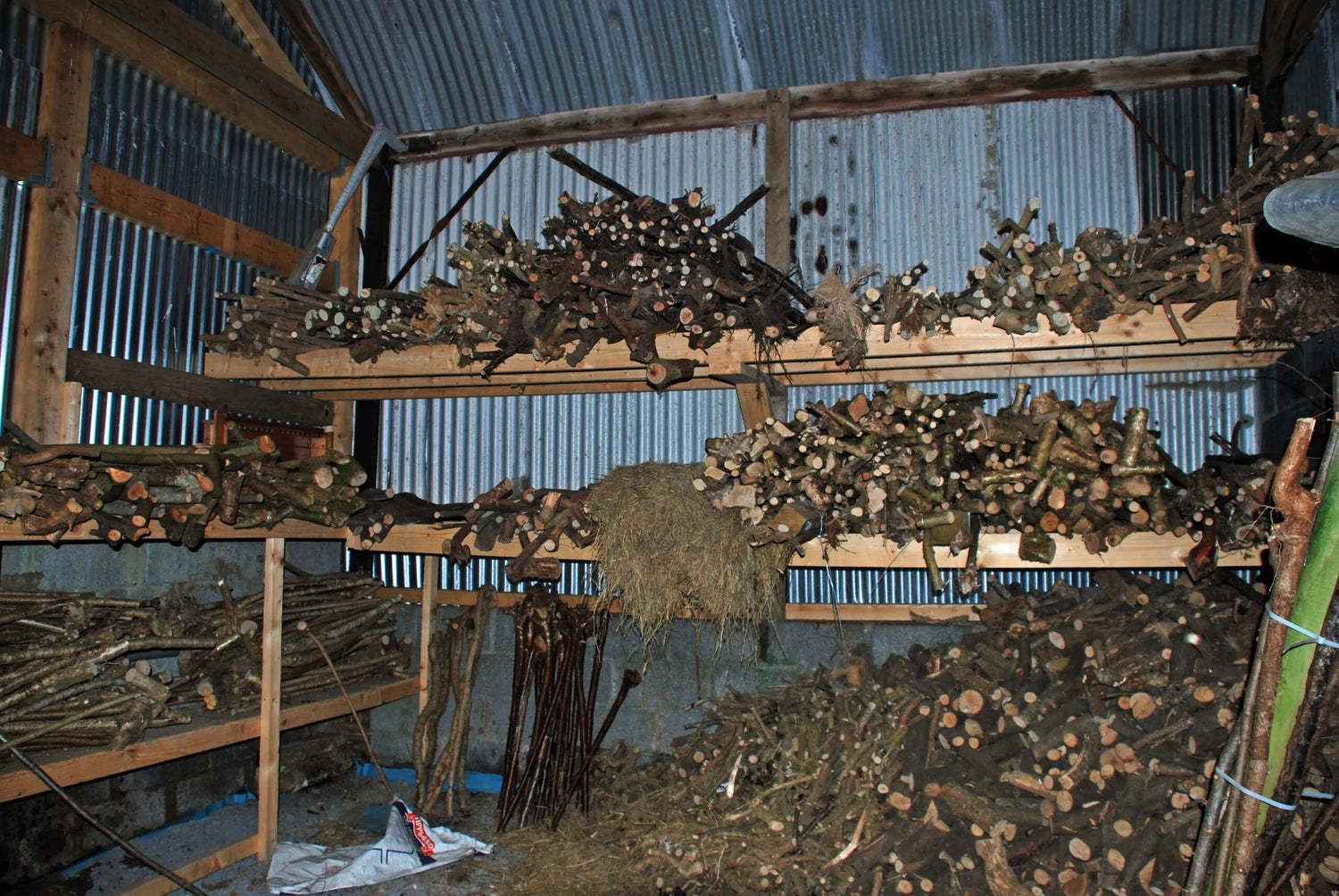
Seasoning
Next I sort the sticks into varieties (hazel, holly, ash, etc.) and put them away to dry out in an old disused hay shed.
Here they stay for a minimum of a year but some species (e.g. blackthorn) can take up to five years to fully dry out. During the drying out period, I treat the sticks with an insecticide to prevent the risk of woodworm
infestation. After that it is a matter of patience – just waiting until
the sticks have dried out sufficiently to begin work on turning them into finished walking sticks.
When seasoning is complete, I begin the process of transforming the seasoned cuttings into walking sticks. I explore what options are possible for shaping a comfortable handle from what nature has provided. This task is rewarding even though it can be time consuming.
When the shaping of the handle has been completed I do a little straightening to ensure that the finished stick is well balanced. However, I feel so much character can be lost by trying to make sticks as straight as billiard cues. Therefore, I interfere as little as possible from the natural growth line of the stick. As a result, none of my sticks are ‘gun barrel’ straight but are none the worse of this! In fact, they look much more natural.
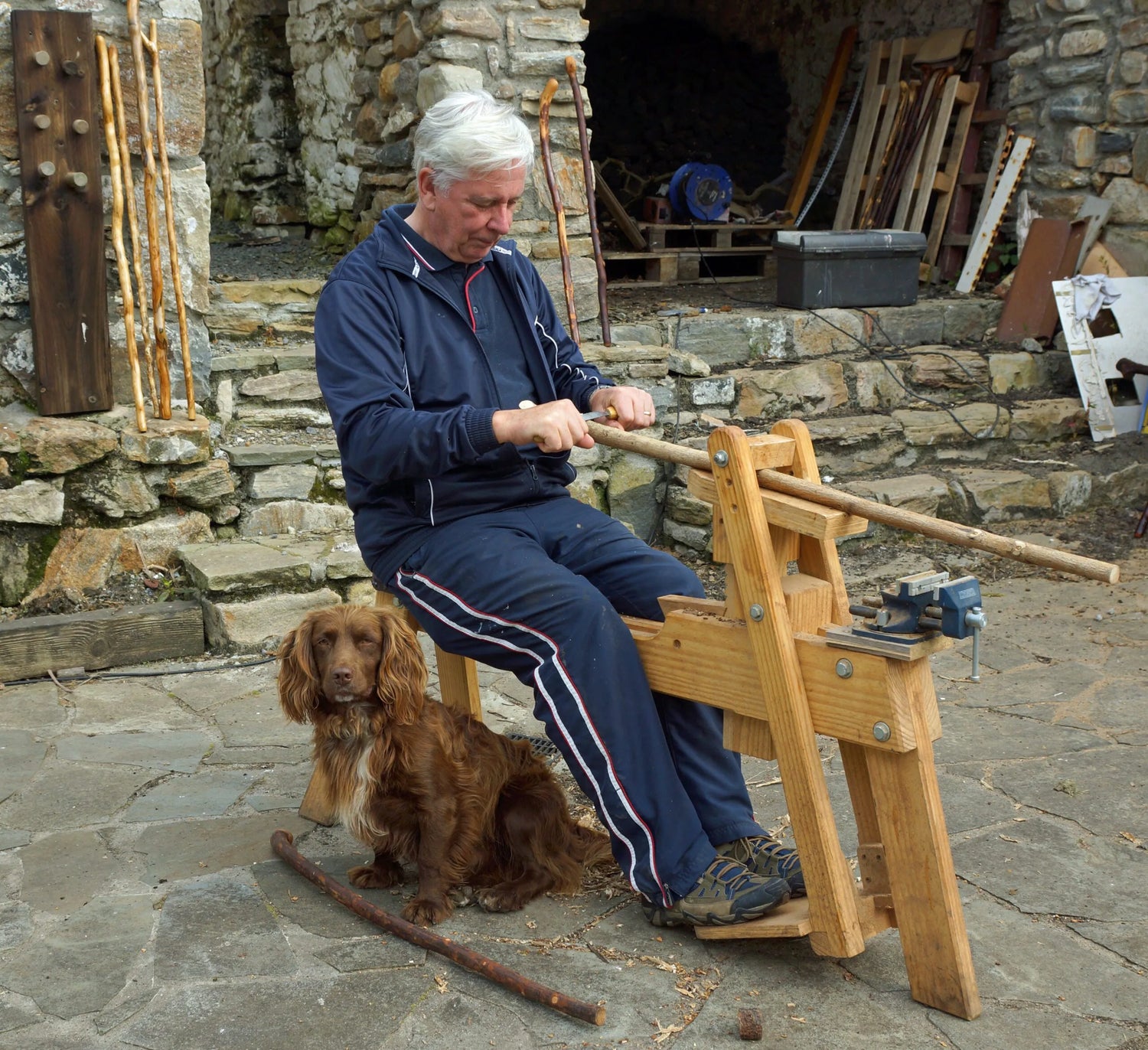
De-barking & Finishing
Next I decide whether the stick should be de-barked, shaved or
left with the bark on. If the shank needs to have the bark removed, I
do this with a drawknife while seated on a shaving horse. From this stage to completion it is a matter of sanding, oiling, sanding, varnishing, sanding (yes, never ending sanding) and varnishing until I get that velvety sheen finish which is the hallmark of every Derryhick Stick.
All in all, taking the time involved in harvesting, seasoning, shaping and finishing, I estimate that a minimum of 8 hours is spent on each stick… makes the price look amazing value!
